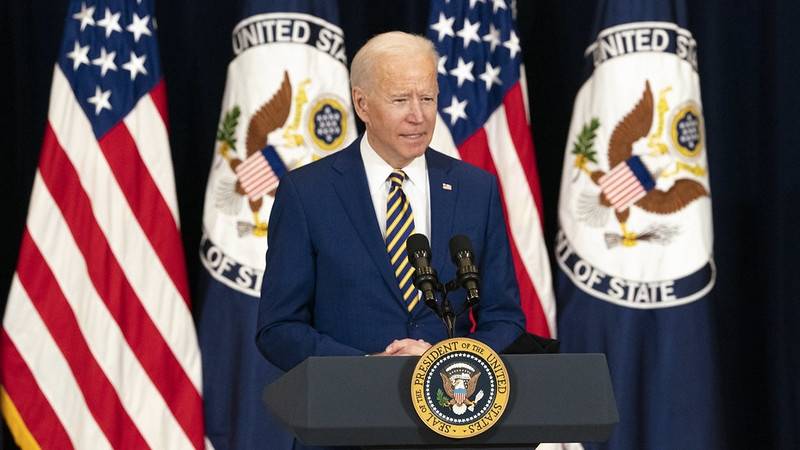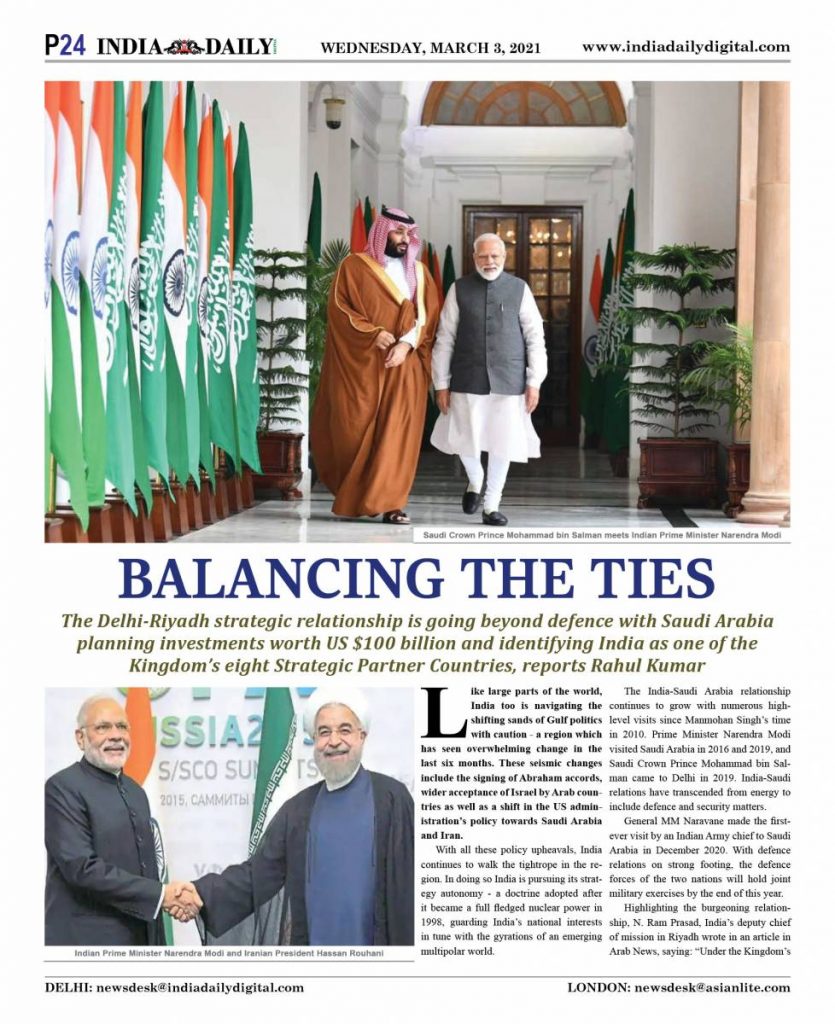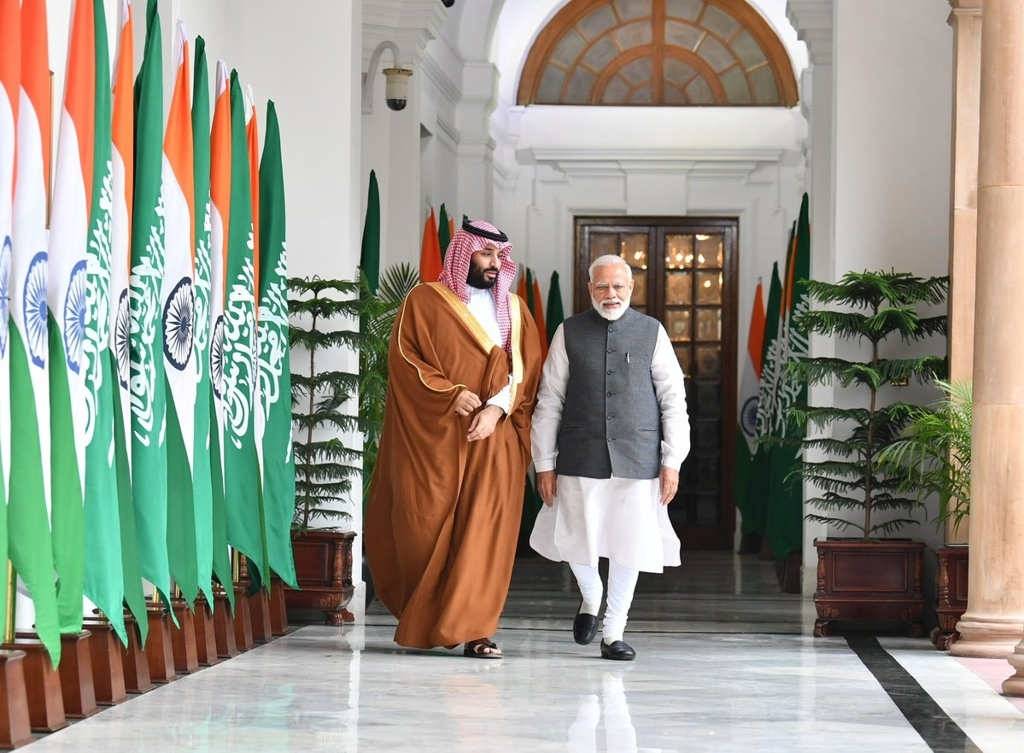The Delhi-Riyadh strategic relationship is going beyond defence with Saudi Arabia planning investments worth US $100 billion and identifying India as one of the Kingdom’s eight Strategic Partner Countries, reports Rahul Kumar
Like large parts of the world, India too is navigating the shifting sands of Gulf politics with caution – a region which has seen overwhelming change in the last six months. These seismic changes include the signing of Abraham accords, wider acceptance of Israel by Arab countries as well as a shift in the US administration’s policy towards Saudi Arabia and Iran.
With all these policy upheavals, India continues to walk the tightrope in the region. In doing so India is pursuing its strategy autonomy – a doctrine adopted after it became a full fledged nuclear power in 1998, guarding India’s national interests in tune with the gyrations of an emerging multipolar world.
The India-Saudi Arabia relationship continues to grow with numerous high-level visits since Manmohan Singh’s time in 2010. Prime Minister Narendra Modi visited Saudi Arabia in 2016 and 2019, and Saudi Crown Prince Mohammad bin Salman came to Delhi in 2019. India-Saudi relations have transcended from energy to include defence and security matters.

General MM Naravane made the first-ever visit by an Indian Army chief to Saudi Arabia in December 2020. With defence relations on strong footing, the defence forces of the two nations will hold joint military exercises by the end of this year.
Vision 2030 & Made in India
Highlighting the burgeoning relationship, N. Ram Prasad, India’s deputy chief of mission in Riyadh wrote in an article in Arab News, saying: “Under the Kingdom’s Vision 2030 reform plans and the flagship “Made in India” initiative of the Indian government, cooperation in the research, development and manufacturing of weapon systems and equipment offers great potential. Of particular interest is collaboration in the fields of shipbuilding, ammunition manufacturing, drone technology, cybersecurity, space, and emerging new technologies.”
With Pakistan shooting itself in the foot over Kashmir, India and Saudi Arabia have been able to side step the thorny Kashmir issue as well. Through the recent grassroots elections in Jammu and Kashmir, India has demonstrated its commitment to bringing democracy to the people in its conflict-prone state, reducing global angst over human rights in Kashmir.
The Delhi-Riyadh strategic relationship is going beyond defence with Saudi Arabia planning investments worth US $100 billion and identifying India as one of the Kingdom’s eight Strategic Partner Countries.

Despite the high-pitched noise from the US over journalist Jamal Khashoggi’s murder, and a sudden downturn in US-Saudi relations, the US too will have to show tact as it balances between an ambitious Turkey, a reforming Saudi Arabia and an Iran squeezed between nuclear ambitions and economic sanctions.
It is in this tricky scenario that India is navigating its ship in the choppy waters of the Gulf. With the Biden administration open to talks with Iran over the 2015 nuclear deal, India senses an opportunity.
Iran: A natural gateway
India looks at Iran as a natural gateway through its Chabahar port to Afghanistan and the Central Asian republics.
Despite American sanctions, India has strengthened the infrastructure at the Chabahar port, which lies close to the Chinese-Pakistani port of Gwadar in Balochistan. India has used the port to route development aid to Kabul. Now, in a measure of success for India, both Afghanistan and Iran are exporting their products through the port. Through Chabahar, India is also getting trade access to Uzbekistan, a heavyweight in a rapidly evolving and resource rich Central Asia.

With good relations between Iran and Russia, India is keen that the Chabahar port becomes co-linked with the North South Transport Corridor (NSTC) that links India to Russia. This also helps India reduce its logistics cost by 20 per cent while trading with Eurasian countries as it bypasses Europe and China. Besides, there is a rising interest in India to dock with new connectivity corridors that are opening to the energy-rich Russian Far East under the Eurasian Economic Union intitiative of Moscow.
In September 2020, Defence Minister Rajnath Singh and External Affairs Minister S Jaishankar had separately visited Tehran to discuss trade and regional issues. The discussions also included developing infrastructure in Iran as China was trying to squeeze itself into the Chabahar port.
SECURITY CHALLENGES
On Rajnath’s invitation, Brigadier General Amir Hatami, Iranian Defence Minister, visited India – the first time for Iran’s defence minister. He was in India for the meeting of defence ministers of the Indian Ocean Region (IOR). Like India, Iran too believes that numerous security challenges need to be addressed jointly in the IOR. Among other things, he also discussed purchasing military and defence equipment from India.

Besides energy relations and the Chabahar port, the two nations also have a common interest in Afghanistan. India and Iran have been in touch over developments related to the Doha accord between the US and Taliban. Iran is invested in Afghanistan as it wants a peaceful border with the landlocked country minus the cross-border movement of terror groups and drug trafficking. It also wants that its tumultuous neighbour stabilises with opportunities for its numerous warring ethnicities, a sentiment that India agrees with.
If the US shows a more pragmatic relationship with Iran, it will bode well for India too. Currently, India and Iran have much in common despite the fast-changing geo-political situation in the Gulf and the South Asian region. With some deft manoeuvring, India should be able to manage the complicated politics of the Gulf and emerge a player of regional consequence.
Also read:PM Modi gets vaccinated

